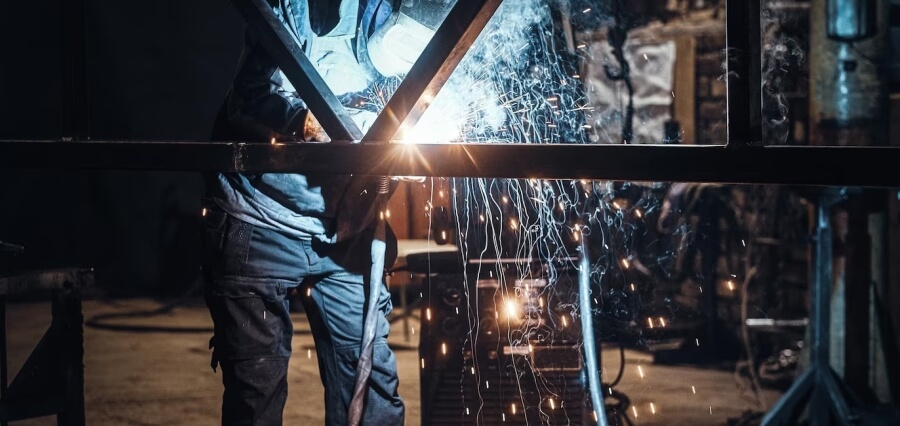In the realm of construction and manufacturing, steel fabrication stands as a cornerstone, providing the structural backbone for countless projects. The modern landscape of steel fabrication is characterized by advanced technologies, sustainable practices, and innovative approaches that have transformed the industry. This article explores the evolution and current state of steel fabrication, highlighting the key elements that contribute to forging excellence in this dynamic field.
Advanced Technologies: Precision at Every Stage
The integration of advanced technologies has revolutionized the precision and efficiency of steel fabrication. Computer-Aided Design (CAD) software enables detailed and accurate planning, allowing fabricators to create intricate designs with precision. CNC (Computer Numerical Control) machining further refines the fabrication process, ensuring consistency and high-quality outcomes in every component.
Automated Machinery: Enhancing Productivity
Automated machinery has become a driving force in modern steel fabrication. Robotics and automated welding systems streamline production processes, significantly increasing output and minimizing errors. This shift towards automation not only enhances productivity but also contributes to a safer working environment by reducing the need for manual, labor-intensive tasks.
Sustainable Practices: Greening the Industry
The modern landscape of steel fabrication places a strong emphasis on sustainability. Fabricators are adopting environmentally friendly practices, including recycling and repurposing materials, to reduce the industry’s ecological footprint. Additionally, advancements in energy-efficient technologies and eco-friendly coatings contribute to a more sustainable approach to steel fabrication.
Lean Manufacturing Principles: Streamlining Operations
Lean manufacturing principles have been embraced in the steel fabrication industry to optimize efficiency and reduce waste. By implementing lean practices, fabricators can streamline operations, minimize unnecessary steps, and maximize the use of resources. This not only improves production timelines but also enhances cost-effectiveness.
Customization and Versatility: Tailoring Solutions
The modern Brisbane steel fabrication landscape thrives on customization and versatility. Fabricators can tailor solutions to meet the specific requirements of diverse projects, from intricate architectural designs to large-scale industrial structures. This flexibility is made possible by advancements in cutting, shaping, and welding technologies that accommodate a wide range of design complexities.
Digitalization: Real-time Monitoring and Management
Digitalization has transformed how steel fabrication projects are monitored and managed. Real-time tracking systems allow for seamless communication between different stages of the fabrication process. This digital integration enhances project coordination, reduces delays, and provides stakeholders with accurate, up-to-date information on project timelines and milestones.
Quality Control Measures: Ensuring Consistency
Quality control measures have become more sophisticated in the modern steel fabrication landscape. Fabricators employ rigorous testing and inspection processes at various stages of production to ensure the consistency and integrity of fabricated steel components. This commitment to quality contributes to the longevity and reliability of structures built with fabricated steel.
Collaborative Design Processes: Integrating Stakeholder Input
Collaboration is a key element in modern steel fabrication, with fabricators actively engaging with architects, engineers, and clients in the design process. Collaborative design processes ensure that the end product aligns with the vision and requirements of all stakeholders. This approach minimizes errors, enhances efficiency, and fosters a sense of partnership throughout the project.
Safety First: Prioritizing Worker Well-being
The modern steel fabrication industry places a strong emphasis on ensuring the safety and well-being of workers. Strict safety protocols, training programs, and the use of state-of-the-art safety equipment contribute to a secure working environment. This focus on safety not only protects workers but also promotes efficiency and project continuity.
Global Integration: Meeting International Standards
The steel fabrication landscape has become increasingly global, with fabricators adhering to international standards and certifications. This global integration allows for the seamless exchange of expertise, technologies, and best practices, ensuring that steel fabrication projects meet the highest industry standards regardless of location.
Conclusion
The modern landscape of steel fabrication is a testament to the industry’s adaptability and commitment to excellence. Advanced technologies, sustainable practices, and a focus on collaboration and safety have propelled steel fabrication into a new era of innovation and efficiency. As the demand for durable, customizable, and sustainable building solutions continues to rise, the steel fabrication industry remains at the forefront, forging excellence in construction and manufacturing projects around the world.


